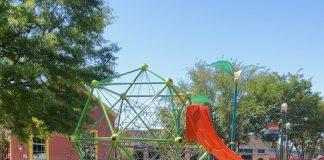Disclosure :: This post is sponsored by Our Lady of Lourdes Women’s & Children’s Hospital. Lactation experts at Our Lady of Lourdes Women’s & Children’s Hospital offer advice on different breastfeeding positions to increase success and comfort for mom.
5 Positions for Breastfeeding Comfort
If you’re a first-time parent, breastfeeding your newborn may seem complicated until you’ve had some practice. But a little preparation can help you feel more comfortable.
Before you begin nursing, take a look at your surroundings. Many mothers like to sit in a glider or in a cozy chair with armrests. Footstools and pillows can provide extra support (try donut-type nursing pillows or “husband” back pillows with arms on each side for nursing in bed).
Achieving optimal latch and positioning is often the first and only treatment needed to fix most breastfeeding problems.
Mom and baby should be belly-to-belly/chest-to-chest – when babies feel gravity on their front body, they can utilize instinctive reflexes that can help them attach to the breast. The baby’s nose and the mother’s nipple are aligned so that optimal latch technique is easily obtained. It’s also important to find a comfortable nursing position (or hold) for both you and your baby. Here are some common ones to consider:
Cradle Position:
This is the “classic” position that mothers most often use and is most frequently pictured. It can be difficult to achieve a deep latch in the early post-partum days because the baby’s head tends to wobble around on the mother’s arm. To start, cradle your baby’s head in the crook of your arm with your baby’s nose opposite your nipple. Turn your baby on his or her side, so that your baby is belly-to-belly with you. Your baby’s head should be  tipped back with the chin coming to the breast first so that your baby can open wide. Use that hand to support your baby’s bottom. Then, raise your baby to your breast. You can support your breast with your other hand. This can be a difficult hold to master until your baby is proficient at breastfeeding and easy to latch.
tipped back with the chin coming to the breast first so that your baby can open wide. Use that hand to support your baby’s bottom. Then, raise your baby to your breast. You can support your breast with your other hand. This can be a difficult hold to master until your baby is proficient at breastfeeding and easy to latch.
Cross-Cradle or Crossover Position:
This hold is similar to the cradle hold, but your arms are positioned differently. Instead of supporting your baby’s head in the crook of your arm, use the hand of that arm to support your breast. Your opposite arm should come around the back of your baby. Support your baby’s head, neck and shoulder by placing your hand at the base of your baby’s head with your thumb and index finger at your baby’s ear level. Like the cradle hold, your baby will be belly-to-belly with you. You may need to use a pillow on your lap to raise your baby to nipple level. The cross-cradle position allows you to have more control over how your baby latches on. Many moms find that they’re able to get their babies latched on more deeply with this hold.
Side-Lying Position:
This hold is a great way for you to get some rest while nursing your baby, but return your baby to the crib or bassinet before falling asleep. Start by lying on your side with your baby on his or her side facing you. Your baby should be positioned so his or her nose is opposite your nipple. Use your lower arm to cradle your baby’s back, or you can tuck a rolled-up receiving blanket behind your baby to help nestle your little one close to you while you use your arm to support your own head. You can support your breast with your other hand. This is another hold that can be a difficult to master until your baby is proficient at breastfeeding and easy to latch.
Clutch or Football Position:
This is also a good position for the mom who had a C-section and also for mothers with large breasts or small babies. This is one of the best positions to see the baby’s mouth when latching. Mothers with twins who want to feed the babies at the same time may also choose this position. The football hold allows babies to take milk more easily — which is also good for mothers with a forceful milk ejection reflex (or let down). To achieve the clutch (or football) hold, place a pillow next to you. Cradle your baby in your arm facing the breast. Use the palm of your hand on that same arm to support his or her neck, and nestle your baby closely against you. Your baby’s feet and legs should be tucked under your arm. Then lift your baby to your breast.
Leaning Back/Laid Back/Biological Nurturing Position:
In this hold, mothers lean back in a reclined position and place the baby on top so that every part of the baby’s body is facing, touching and closely applied to one of the mother’s curves or to part of the surrounding environment. Due to gravity, the baby’s chin, torso, legs and feet automatically stay in contact with the mother’s body and the mother’s body supports the baby’s weight throughout the feeding. Using laid-back positions, especially immediately after delivery and in the early post-partum period, can make it easier for babies to get to the breast and attach deeply, reducing the steps mothers need to remember when latching.
Nursing can be one of the most challenging but rewarding experiences you’ll have as a mother.
As you become more used to breastfeeding your baby, you can try different positions or modify the basic ones. Experiment with the different holds until you find a position that lets your baby nurse successfully and allows you to feel comfortable. You and your baby will soon find that nursing can be a relaxing, great way to bond.


















